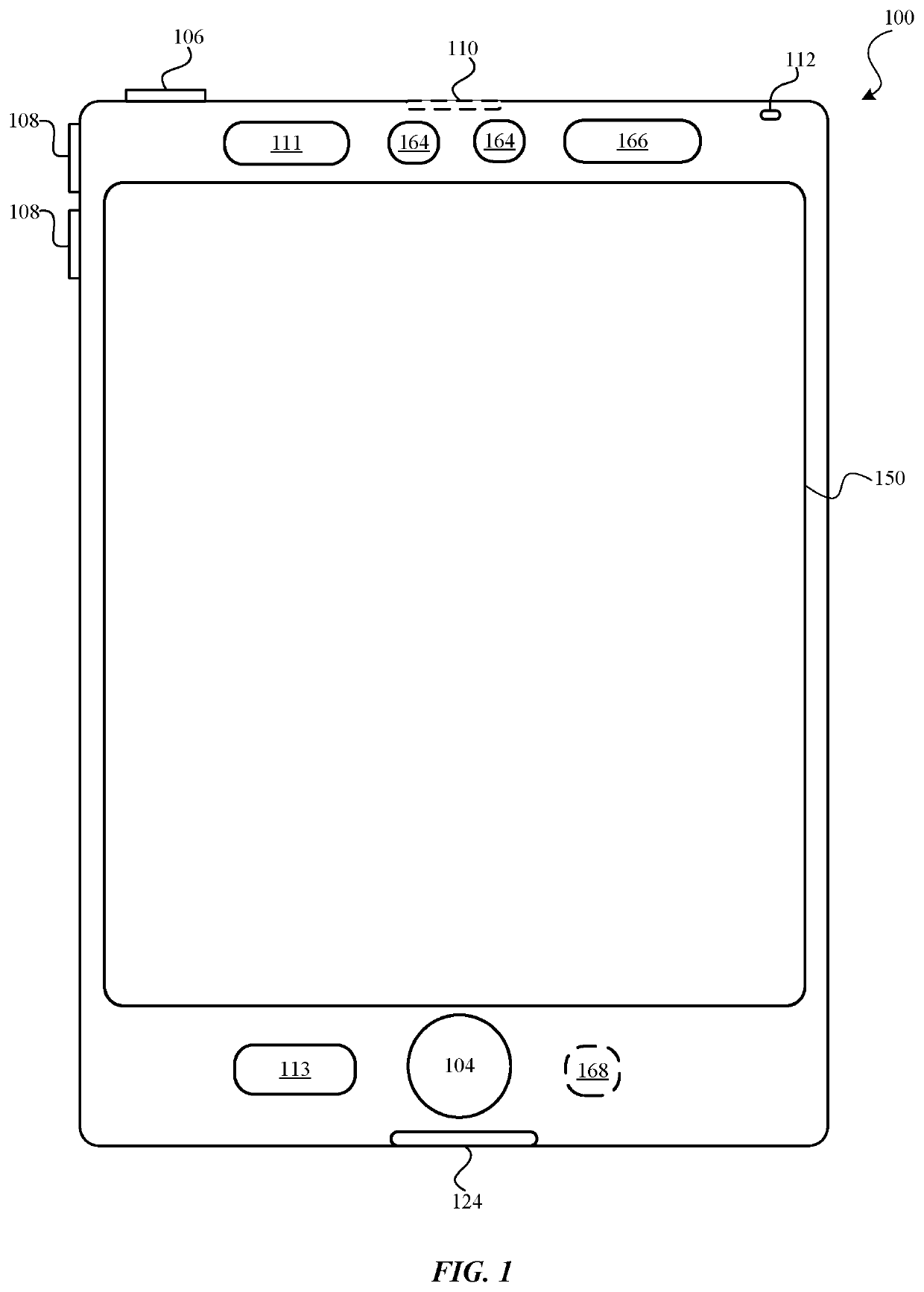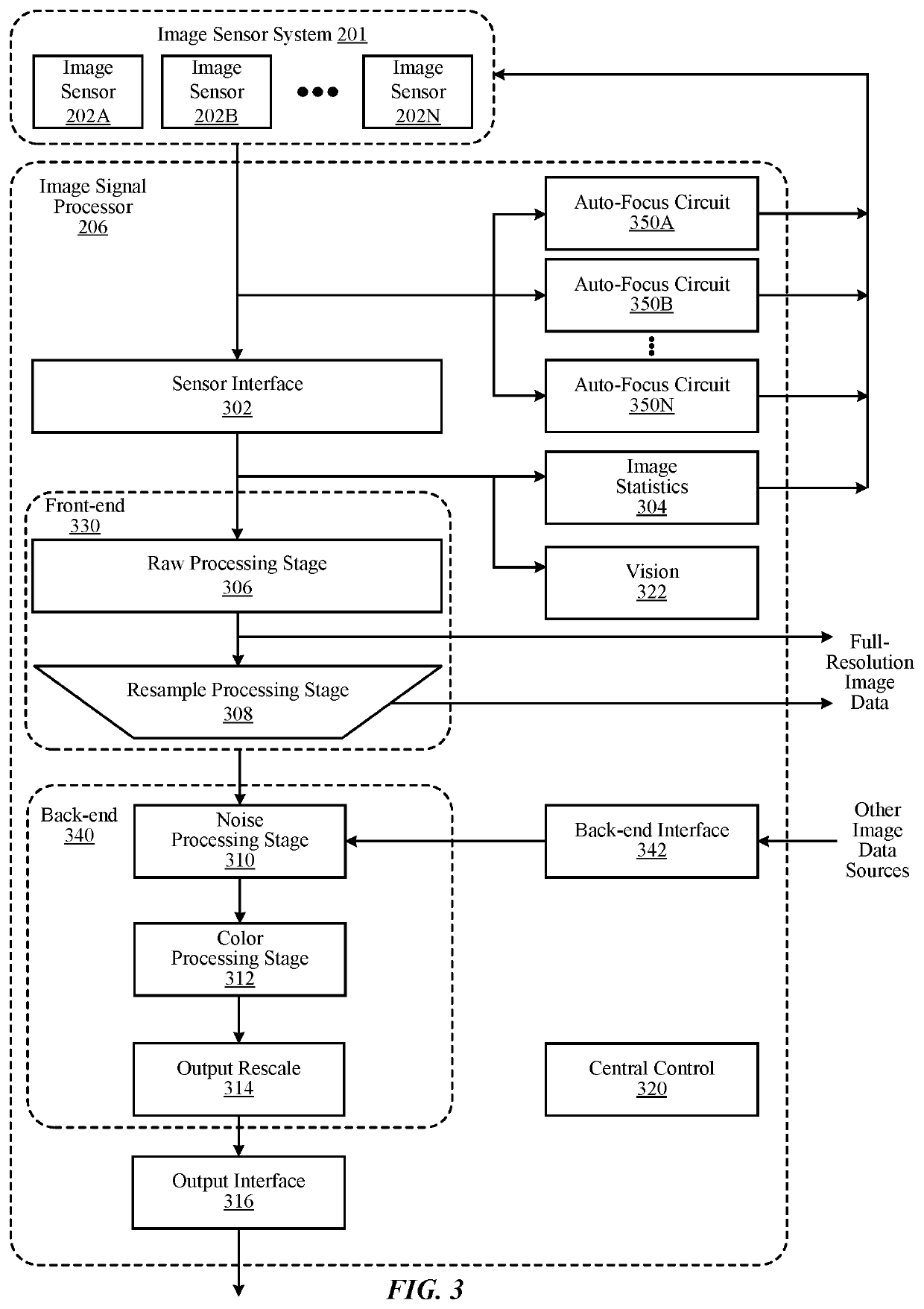Biasing a noise filter to preserve image texture
a noise filter and image technology, applied in the field of image processing, can solve the problems of reducing the overall quality of image data, consuming significant bandwidth of the cpu and other peripheral resources, and increasing power consumption
- Summary
- Abstract
- Description
- Claims
- Application Information
AI Technical Summary
Benefits of technology
Problems solved by technology
Method used
Image
Examples
example image
Signal Processing Pipelines
[0046]FIG. 3 is a block diagram illustrating image processing pipelines implemented using ISP 206, according to one embodiment. In the embodiment of FIG. 3, ISP 206 is coupled to an image sensor system 201 that includes one or more image sensors 202A through 202N (hereinafter collectively referred to as “image sensors 202” or also referred individually as “image sensor 202”) to receive raw image data. The image sensor system 201 may include one or more sub-systems that control the image sensors 202 individually. In some cases, each image sensor 202 may operate independently while, in other cases, the image sensors 202 may share some components. For example, in one embodiment, two or more image sensors 202 may be share the same circuit board that controls the mechanical components of the image sensors (e.g., actuators that change the focal lengths of each image sensor). The image sensing components of an image sensor 202 may include different types of image se
example method
of Filtering with Texture Preservation
[0086]FIG. 7 is a flowchart illustrating a method of biasing an image noise filter to reduce edge and texture blurring of image data, according to one embodiment. The steps of the method may be performed in different orders, and the method may include different, additional, or fewer steps.
[0087]An offset calculator circuit receives 702 receives pixel values for a block of original pixels in an image data. The block of original pixels comprises a center pixel and neighboring pixels within a predetermined distance from the center pixel. The block of original pixels may be a 5×5 block of pixels. In some embodiments, the block of original pixels is a 3×3 block of pixels.
[0088]The offset calculator circuit applies 704 a high pass filter to pixel values of the block of original pixels to generate an offset value for the center pixel. The high pass filter may be a Laplacian high pass filter or a Laplacian of Gaussian high pass filter. The offset value may
PUM
 Login to view more
Login to view more Abstract
Description
Claims
Application Information
 Login to view more
Login to view more - R&D Engineer
- R&D Manager
- IP Professional
- Industry Leading Data Capabilities
- Powerful AI technology
- Patent DNA Extraction
Browse by: Latest US Patents, China's latest patents, Technical Efficacy Thesaurus, Application Domain, Technology Topic.
© 2024 PatSnap. All rights reserved.Legal|Privacy policy|Modern Slavery Act Transparency Statement|Sitemap



